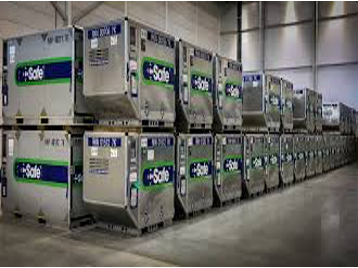
Trends in Supply Chain Visibility and Implications for the COVID-19 Vaccine Rollout
 By Forrest Hobbs
By Forrest Hobbs
On October 13th, CSafe Global hosted a webinar with Cloudleaf, exploring trends in supply chain visibility and the implications of that technology for the COVID-19 vaccine rollout. Here, we highlight some of the key takeaways from the webinar to help you understand how these trends and technologies are reshaping the cold chain.
To get more insights, and learn what CSafe and Cloudleaf are specifically doing in terms of COVID-19 vaccine distribution innovation, watch the entire on-demand webinar.
Takeaway #1: Sensors, tracking technology, systems of record data and contextual information are converging to allow companies to capture real-time data and be more proactive with shipment issues.
The convergence of these technologies enables companies to capture data in real time, transmit that data in real time, and be more proactive and preemptive about any issues that may arise with a specific shipment. These capabilities, alongside cloud computing innovations, have enabled companies to process billions of events with sub-millisecond latency. This means that companies can get real-time, granular data down to the pallet level, the box level, and ultimately down to the individual item level to understand where their product is and what condition it’s in.
Takeaway #2: Smart containers are the wave of the future.
Smart containers are taking the digital age of shipping one step beyond paperless processes by embracing IoT technologies to support enhanced decision-making. These connected types of devices have the ability, through a machine-to-machine (M2M) interface, to talk to the outside world as well as talk to sensors within the products that are loaded in the container itself. These smart containers can report on a product’s condition and position, provide remote diagnostics and blockchain services, and can support product-level sensors.
Takeaway #3: Cold chain-specific supply chains are quickly adopting these new sensor technologies.
The cold chain represents the side of supply chain where careful temperature management is crucial. The convergence of cost, functionality and technology is such that companies can now leverage these smart sensors and the existing wireless infrastructure around the world, in combination with cloud-based services and platforms, to get a comprehensive view of what's going on in their cold chains.
Takeaway #4: Interoperability between platforms will become more common.
Interoperability between platforms will be more common, making it easier to capture granular information and drive AI solutions. The ability for technology partners to work together through standard interfaces, APIs, and share information is going to be a key requirement in order to meet customer expectations.
Takeaway #5: AI and machine learning can identify patterns in shipment data that can be used for predictive modeling.
Machine learning and artificial intelligence are technologies that are transforming the cold chain. Once companies have the real-time data, they can use machine logic to navigate through that data and look for patterns. Once patterns are identified, organizations can run predictive models. This type of predictive modeling is the key to opening new doors of cost savings and efficiency for companies with cold chains.
Takeaway #6: Cold chain visibility will play a major role in the distribution of a COVID-19 vaccine.
The successful development, manufacturing and distribution of the COVID-19 vaccine(s) will depend on having real-time visibility into the temperature of the vaccines, both in storage in a warehouse or fulfillment center, and in transit. Obviously, the vaccine will need to be kept within strict temperature requirements throughout every transport leg. Visibility into transportation capacity will also be a critical requirement. For example, in the transportation phase, visibility will be needed into whether a particular mode of transport (land, sea, air, rail) is full or partly full at a particular point in time.
Takeaway #7: CSafe’s new shipment visibility platform will give cold chain customers deeper visibility into their cold chain, higher quality service and the ability to manage their cold chain more proactively.
CSafe Global’s shipment visibility platform will merge all contextual data, such as weather and traffic, with real-time data coming from IoT sensors and IoT trackers, providing companies with information based upon GPS and cellular data, shock and vibration data, as well as pressure, humidity, sound, and temperature data. The end result is that companies can leverage this data to manage shipments more proactively.
Find out more about our partnership with CSafe to offer customers a powerful cold chain solution that combines CSafe’s state-of-the-art thermal shipping solutions with Cloudleaf’s Digital Visibility Platform.